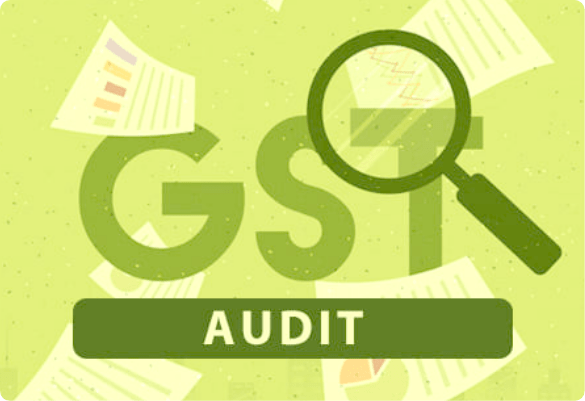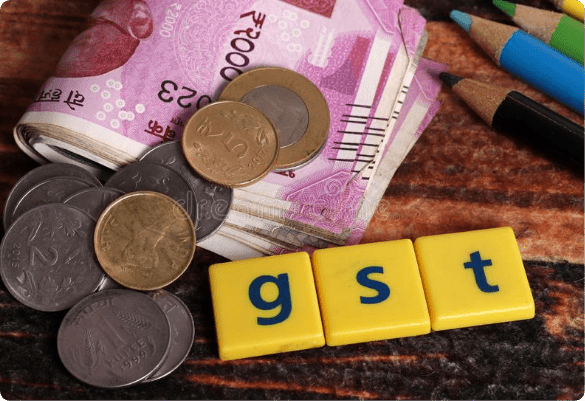Registered businesses in India have to file monthly, quarterly, and annual GST based on the type of business they operate. While the Government brought in the GST as a reform to simplify the taxation process, there are some areas where business entities get confused and make errors, costing them a hefty fine.
So here are a few errors commonly made while filing GST- we hope you understand these and save yourself from the trouble!
Common errors made while filing GST
- Delaying GST filing
One of the most commonly made errors is filing the GST after the deadline. Many people do not stay updated on the due dates for GST filing each quarter and pay a fine of Rs 100 under CGST per day and Rs 100 under SGST per day. - Not filing returns in case of no sales
Many businesses make the grave mistake of not filing their GST returns when there are no sales in the quarter. It is a common misconception that an entity has to file their GST returns only if they have had sales.
Contrary to this opinion, it is important that businesses not miss their GST filing deadline. Any failure to do so would result in a hefty penalty. - Terming zero-rated exports as nil-rated & vice versa
Several retailers treat zero-rated and nil-rated supplies while filing the GST on it. However, zero-rated supplies are very different from nil-rated supplies. Zero-rated supplies are those goods and services that are meant for exports or Special Economic Zones. However, the business can claim credit for the same. Nil-rated supplies like salt, sugar, jaggery and food grains attract no taxes, and no credit can be claimed. The GST on these items has to be filed.
It has been reported that filters often treat zero-rated and nil-rated goods and services as the same. While no GST is levied on nil-rated goods and services, the GST levied on zero-rated goods and services can be claimed as a credit. - Incorrect entry in the results
When the monthly and the quarterly data filed by an entity does not match the annual data, the chances of the GSTR9 getting rejected increase. Unfortunately, this can result in the entity receiving a demand note from the GST Department in the future. - Filing GST under the wrong category
One of the most commonly made errors while filing GST is filing it under the wrong head. For example, it may happen that you accidentally file SGST under the CGST header. Similarly, you may put B2B supply under B2C supply. Since this will not reflect in GSTR2A, you may not be able to claim an Input Tax Credit for the same. - Claiming incorrect Input Tax Credit
After the supplier has uploaded the requisite invoices, the taxpayer’s purchases and its related input tax credit are automatically generated in GSTR2A. This taxpayer is required to separately disclose their input tax credit when they file their GST. This must be done carefully, entering the right value. If a lower or a higher value is entered, the difference will have to be paid in the GST filing. - Ignoring how the reverse charge mechanism works
Reverse Charge Mechanism in GST is when the recipient of the goods or services pays the tax, not the supplier. The Government keeps on updating the items that are included in the reverse charge mechanism.
Nevertheless, due to the nature of GST, where suppliers are supposed to pay taxes on the goods and services being rendered, many businesses end up paying unwanted reverse charges due to a lack of knowledge.
On the flip side, many times, the recipients of such items often forget to pay the due taxes as per the reverse charge mechanism. - Interstate sales entered for intrastate sales
Although both interstate and intrastate look like similar words, choosing the wrong one can cost you dearly. While IGST is levied on interstate supply, CGST is levied on intrastate supply. Once filed, there is no way to amend the error. - Categorize export sales as regular sales
Slotting export sales in the column meant for regular sales can lead to denial of GST refunds or credit wherever applicable. - Not checking for minute details
Many other minute details lead to incorrect GST filing or require amendments. For example, incorrect HSN and SAC codes, wrong business turnover, incorrect date and place of supply, and wrong GSTN and invoice number can lead to a complicated and long filing process.
Steps to take to avoid errors while filing GST
Filing GST is a highly complicated process wherein even a small error can lead to huge monetary fines. While utmost attention must be paid to the tiniest of details while filing GST, here are a few things to ensure to avoid making any errors while filing GST:
- Make sure that you file GST even if you have had nil sales.
- Make sure that you tag all interstate transactions under IGST and intrastate transactions under SGST.
- Understand what supplies are categorized as nil-rated and zero-rated to avoid confusion.
- Make sure that the information entered in GSTR1 and GSTR3B is the same since there is no provision to amend it later. Reconcile the data before uploading it.
- Double-check the data being entered in each box, and under each header.
- Make sure that the basic details like PAN, Aadhaar, date of birth, etc are correct to avoid validation errors amid filing.
- When you are filing a nil return, make sure that you enter 0 value in all the fields.
- Make sure that only IGST is selected for interstate supply, CGST and SGST must be deselected. Vice versa, for intrastate supply, select CGST and SGST; IGST must be deselected.
- Ensure that the correct invoice is uploaded and mentioned on the credit/debit note.
- Do not forget to halve the tax rate when SGST and CGST apply.
Filing GST on time each month is mandatory for businesses to avoid being penalised. To make the compliance and filing process straightforward and hassle-free, try KYSS. It’s simple and takes only 30 seconds to get started.






